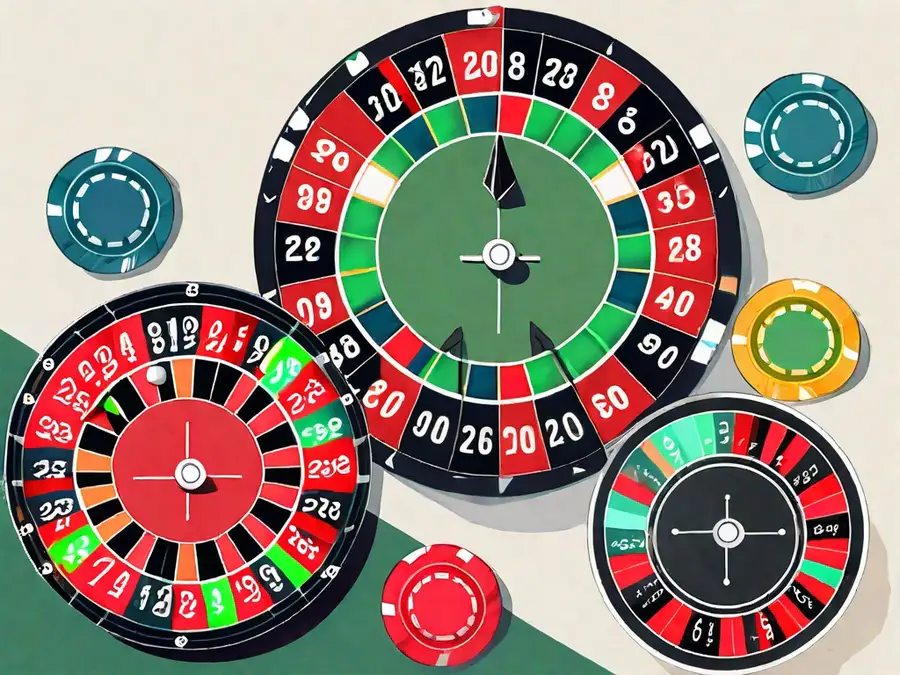Understanding How the Martingale Strategy Works

In the world of gambling and trading, the Martingale strategy has gained significant attention. This strategy, although simple in its concept, has both attracted and divided experts in the field. As an expert in this area, I will take you on a journey through the various aspects of the Martingale strategy, exploring its origins, mathematical foundation, applications in gambling and trading, potential risks and rewards, and the psychology behind it.
The Origin and Concept of the Martingale Strategy
Before we dive into the details, let's first understand where the Martingale strategy originated and its core concept. The Martingale strategy traces its roots back to 18th-century France, where it was commonly used in games of chance such as roulette. The strategy's basic idea is to double your bet after each loss, with the aim of recovering previous losses and making a profit in the long run.
But what led to the development of such a strategy? It was the allure of the game of roulette itself. With its spinning wheel and the excitement of predicting where the ball would land, people were drawn to this game of chance. However, as with any game, players sought ways to increase their chances of winning. And thus, the Martingale strategy was born.
The Mathematical Foundation of Martingale
At the heart of the Martingale strategy lies a mathematical principle known as the Law of Large Numbers. This principle states that in a series of independent and identically distributed random events, the average outcome will converge towards the expected value as the number of trials increases.
So, how does this apply to the Martingale strategy? Let's take a closer look. Imagine you're sitting at a roulette table, placing your bets on red. The probability of winning on any given spin is approximately 18/37 (since there are 18 red slots and 37 total slots). By doubling your bet after each loss, the theory suggests that eventually, a win will occur, leading to a net profit that compensates for the cumulative losses.
However, it's important to note that the Law of Large Numbers doesn't guarantee a win in every instance. It simply suggests that over a large number of trials, the outcomes will tend to align with the expected probabilities. In the case of the Martingale strategy, it assumes that a win will eventually happen, but it doesn't specify when or how long it will take.
The Role of Probability in Martingale
Understanding probability is vital when implementing the Martingale strategy. The strategy relies on the assumption that a winning outcome will eventually occur, given enough time and an infinite bankroll. However, this assumption is flawed, as it fails to account for the limits imposed by table maximums and finite resources.
Let's delve deeper into the role of probability in the Martingale strategy. While the strategy may seem logical at first glance, it's important to consider the limitations and risks involved. Each spin of the roulette wheel is an independent event, meaning that the outcome of one spin does not affect the outcome of the next. This concept is crucial to understand because it highlights the fallacy of assuming that a win is “due” after a series of losses.
Moreover, the Martingale strategy assumes an infinite bankroll, which is not realistic for most players. In reality, there are table maximums that limit the amount you can bet, preventing you from doubling your bet indefinitely. Additionally, even if you have an ample bankroll, a long losing streak can quickly deplete your funds, leaving you unable to continue doubling your bets.
While the Martingale strategy may seem like a surefire way to recover losses and make a profit, it's important to approach it with caution. Understanding the underlying mathematics and the limitations of the strategy is crucial to making informed decisions when implementing it.
The Martingale Strategy in Gambling
The Martingale strategy has found significant utilization in the realm of gambling, particularly in games with even odds like roulette and blackjack. Let's explore how this strategy is applied in these popular casino games:
Application in Roulette
In roulette, the Martingale strategy entails doubling your bet on either red or black after each loss. The idea is that eventually, your chosen color will win, resulting in a net profit that surpasses your previous losses. However, it's important to note that the Martingale strategy does not guarantee a win and can lead to substantial losses if bad luck persists.
When applying the Martingale strategy in roulette, players often consider the odds and probabilities associated with each bet. For example, some may choose to focus on betting on red or black, as these options provide a nearly 50% chance of winning. Others may opt for even or odd numbers, which also offer a similar probability of success.
It is worth noting that while the Martingale strategy can be enticing due to its potential for quick recovery and profit, it is not without its drawbacks. The strategy assumes that players have an unlimited bankroll and that there are no table limits in place. In reality, casinos impose maximum betting limits, which can hinder the effectiveness of the Martingale strategy.
Use in Blackjack
In blackjack, the Martingale strategy can be applied by doubling your bet after each losing hand. By doing so, you aim to recover your previous losses and make a profit when a winning hand eventually occurs. However, applying the Martingale strategy in games that incorporate a house edge like blackjack can be highly risky, as prolonged losing streaks can quickly deplete your bankroll.
When using the Martingale strategy in blackjack, players must consider the specific rules of the game and adjust their betting accordingly. For instance, some variations of blackjack allow players to double down or split their hand, which can affect the strategy's application. Additionally, understanding the basic strategy of blackjack, such as when to hit or stand, is crucial for maximizing the potential of the Martingale strategy.
It's important to remember that while the Martingale strategy may seem promising, it is not foolproof. The strategy relies on the assumption that winning hands will eventually occur to offset the losses. However, in reality, there is always a chance of a long losing streak, which can lead to significant financial consequences.
Furthermore, casinos are aware of the Martingale strategy and have implemented measures to counteract its effectiveness. They often impose table limits to prevent players from continuously doubling their bets, thereby limiting the potential for recovery. Additionally, casinos may employ shuffling machines or multiple decks to increase the house edge and reduce the likelihood of consecutive winning hands.
In conclusion, while the Martingale strategy can be an intriguing approach to gambling, it is essential to approach it with caution. Understanding the game's rules, probabilities, and limitations imposed by casinos is crucial for making informed decisions. Remember, gambling should always be approached responsibly, and strategies like the Martingale should be used with careful consideration of the potential risks involved.
The Martingale Strategy in Trading
Beyond its application in gambling, the Martingale strategy has also found its way into the world of trading, particularly in forex and stock markets. Let's examine how traders utilize this strategy:
Forex Trading and Martingale
In forex trading, the Martingale strategy can be implemented by doubling the position size after each losing trade. The rationale behind this approach is to recover the losses with a subsequent winning trade. However, traders must exercise caution, as continuous losses can deplete their trading account rapidly.
When implementing the Martingale strategy in forex trading, traders often look for currency pairs with high volatility. This is because higher volatility can provide more frequent opportunities for the market to reverse in their favor, allowing them to recover their losses. However, it is important to note that volatility can also increase the risk of larger losses, especially if the market continues to move against the trader's position.
Furthermore, traders who use the Martingale strategy in forex trading often set a maximum number of consecutive losing trades they are willing to endure. This helps them manage their risk and prevent their trading account from being completely wiped out. By setting a limit, traders can assess their trading performance and make necessary adjustments to their strategy if they reach their predetermined threshold.
Stock Market Trading with Martingale
Similar to forex trading, the Martingale strategy is often used in stock market trading. Traders employing this strategy may increase their position size after each losing trade, aiming to recover the losses when the market turns in their favor. While it may seem tempting, traders must remember that the stock market can be highly unpredictable, and the Martingale strategy does not guarantee success.
When applying the Martingale strategy to stock market trading, traders often focus on highly liquid stocks with significant trading volume. This allows them to enter and exit positions more easily, reducing the risk of being unable to execute trades at desired prices. Additionally, traders may also consider incorporating technical analysis indicators or patterns to identify potential reversal points in the stock's price movement.
It is crucial for traders using the Martingale strategy in stock market trading to have a thorough understanding of the companies they are trading. Fundamental analysis, such as studying financial statements, industry trends, and news events, can provide valuable insights into the stock's potential future performance. By combining technical and fundamental analysis, traders can make more informed decisions when increasing their position size after a losing trade.
However, it is important to note that the Martingale strategy, like any trading strategy, carries risks. Traders must carefully assess their risk tolerance and consider implementing risk management techniques, such as setting stop-loss orders or using trailing stops, to protect their capital. Additionally, continuously monitoring the market and adjusting the strategy accordingly is essential to adapt to changing market conditions.
The Potential Risks and Rewards of the Martingale Strategy
Like any strategy, the Martingale approach carries its own set of risks and potential rewards. Understanding the intricacies involved is crucial when deciding whether to employ this strategy:
Understanding the Risk of Ruin
One of the major pitfalls of the Martingale strategy is the substantial risk of ruin. Prolonged losing streaks and table limits can deplete your bankroll faster than expected, making it impossible to recover from substantial losses. It's essential to establish a risk management plan and set predetermined stop-loss levels to avoid catastrophic outcomes.
The Potential for Profit
While the Martingale strategy can incur significant losses, it also presents the potential for profit, particularly in games with even odds. Navigating a series of wins can result in impressive gains, but it's crucial to exercise discipline and know when to walk away to secure your profits.
The Psychology Behind the Martingale Strategy
Now let's delve into the fascinating realm of psychology and its intertwining relationship with the Martingale strategy:
The Gambler's Fallacy and Martingale
The Martingale strategy is closely linked to the gambler's fallacy, which is the belief that past outcomes can influence future outcomes in random events. Many Martingale users fall into this cognitive trap by assuming that a long streak of losses increases the likelihood of a subsequent win. However, each event in gambling or trading is independent and has no bearing on future outcomes.
Emotional Control and Discipline in Martingale
Successfully utilizing the Martingale strategy requires strict emotional control and discipline. It can be easy to succumb to frustration, greed, or fear after a series of losses. Maintaining a rational mindset, adhering to predetermined stop-loss levels, and understanding the limitations of the strategy are key to long-term success.
As an expert in the field, I have witnessed both the potential rewards and hazardous pitfalls of the Martingale strategy. I firmly believe that no strategy can guarantee consistent success in gambling or trading, as both endeavors inherently involve an element of chance and unpredictability. However, by understanding the principles and limitations of the Martingale strategy, you can make informed decisions and potentially enhance your chances of success.
Remember, responsible gambling and trading should always be accompanied by proper risk management techniques, thorough research, and a clear understanding of the potential consequences. Happy gambling and trading!
Personal Advice:
Throughout my years of experience with the Martingale strategy, I have learned an invaluable lesson that I would like to share with you. While the allure of quick profits may be tempting, it is crucial to approach the Martingale strategy with caution and moderation. Establishing strict bankroll management, setting loss limits, and incorporating other strategies into your overall approach can help mitigate the risks associated with the Martingale strategy.
Furthermore, never forget that gambling and trading are forms of entertainment and should never jeopardize your financial well-being. Remember to enjoy the process, embrace the excitement, and approach it with a level-headed mindset. With a balanced approach, you can navigate the world of gambling and trading, armed with knowledge and a pinch of luck.
As you consider the potential of stock trading and the broader cryptocurrency landscape, why not expand your investment horizon with Morpher? At Morpher.com, you can leverage the power of blockchain technology to trade across a multitude of asset classes, including cryptocurrencies, without the burden of fees or liquidity constraints. With the ability to engage in fractional investing, short selling, and up to 10x leverage, Morpher offers a unique and flexible trading experience that aligns perfectly with the innovative spirit of crypto mining. Take control of your investments with the safety of the Morpher Wallet and explore new market opportunities today. Sign Up and Get Your Free Sign Up Bonus to embark on a transformative trading journey with Morpher.

Disclaimer: All investments involve risk, and the past performance of a security, industry, sector, market, financial product, trading strategy, or individual’s trading does not guarantee future results or returns. Investors are fully responsible for any investment decisions they make. Such decisions should be based solely on an evaluation of their financial circumstances, investment objectives, risk tolerance, and liquidity needs. This post does not constitute investment advice.

Painless trading for everyone
Hundreds of markets all in one place - Apple, Bitcoin, Gold, Watches, NFTs, Sneakers and so much more.

Painless trading for everyone
Hundreds of markets all in one place - Apple, Bitcoin, Gold, Watches, NFTs, Sneakers and so much more.









